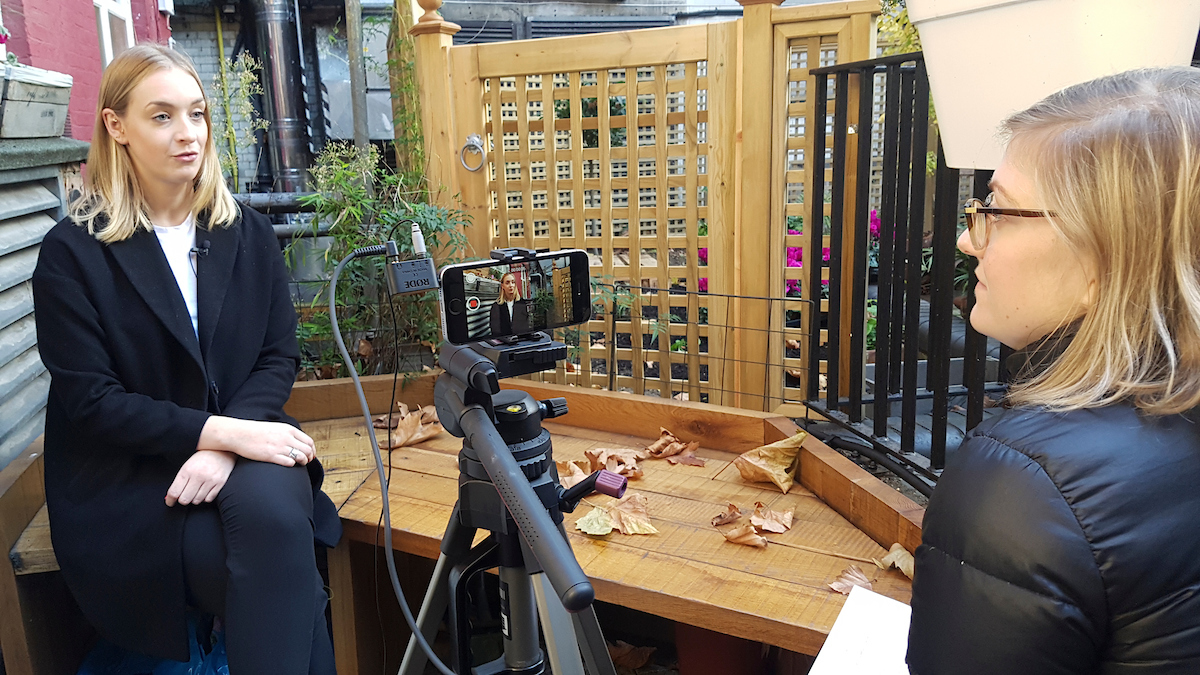Top Tips: choosing your interview location

If you are new to filmmaking or conducting an interview for the first time, there are a few things you need to consider before you start. With a bit of knowledge, preparation and research you can produce a really professional looking film.
This week we’re going to share some Top Tips to focus on when choosing the best location for your interview. We’ll consider the surroundings, audio and lighting for the story you want to tell.
So, let’s get started.
1. Audio
When you’re filming an interview, sound is probably the most important consideration. There is nothing much you can do at editing stage with bad sound, so the key is to record the best audio you can.
Quiet location
Try and pick a quiet location for your interview and everything becomes a lot easier. If you can, try to keep away from things like busy roads and corridors, generators or air conditioning vents, or places where this is a lot of foot traffic-human or animal kind! It’s almost impossible to get complete silence and actually a bit of background or ambient noise can help add to the story, but it’s critical that it doesn’t compete with or overtake the interviewee.
If it’s unavoidably noisy, and the viewer won’t see the cause of the sound then it can be a good idea to describe, or get the interviewee to describe where you are. This will really help the viewer deal with the noise. For example, “It’s noisy on the ward where I work, there are always lots of babies crying.”
Wild sound
Always record at least 15- 20 seconds of the ambient sound with no one talking. This is called wild sound and will really help when it comes to the editing stage.
Here is a useful acronym to help remember some of these tips for recording good audio and remember to keep CALM
Close your eyes and listen
Away from interruption
Levels- always do a sound check to set levels
Monitor- always listen to what you’re recording
2. Lighting
Another consideration for your interview location is the light. We try to use natural day night for our interviews as much as possible, so that we aren’t having to set up lights. Generally speaking it is more flattering if you choose diffused light, i.e. an area of shade, out of the direct rays of the sun.
If you are inside then use the natural light coming in from a window or a door. If it is looking a bit dark then turn on lamps or lights to help give some ambient light.
3. The Story
Is the location relevant to the story? If you are exploring the issue of increasing homelessness in cities then being in an outdoor urban environment will look better than sitting in a meeting room or office. If you are looking for legal support for housing issues then you might want to be in an office or legal-looking location.
4. Comfort
Is your interviewee comfortable? You need the person you are interviewing to be relaxed, calm and able to speak freely. This works best when there aren’t too many people listening and watching what’s going on. For example a corridor or room full of other people would not be a good environment. Many interviewees would feel inhibited in this scenario.
It can all be a bit of a balancing act and there is often a compromise, so go with what works best, remembering that people are more forgiving of poor visuals than they are of poor audio. Often the interviewee is only on screen for around 7 seconds before you cut to B-roll so better to make sure you have clear audio and that they are comfortable.
Need more help?
Then why not attend one of our smartphone filmmaking courses.
Related reading
Have a look at this useful blog from Mike Smith at Charity Comms on some of the problem personalities you may come across when you conduct an interview. Will you get a ‘tangent lover’ or an ‘over-rehearsed’?! We also have a popular interview course if you would like to brush up, after all it’s the interview that teases out the story.
